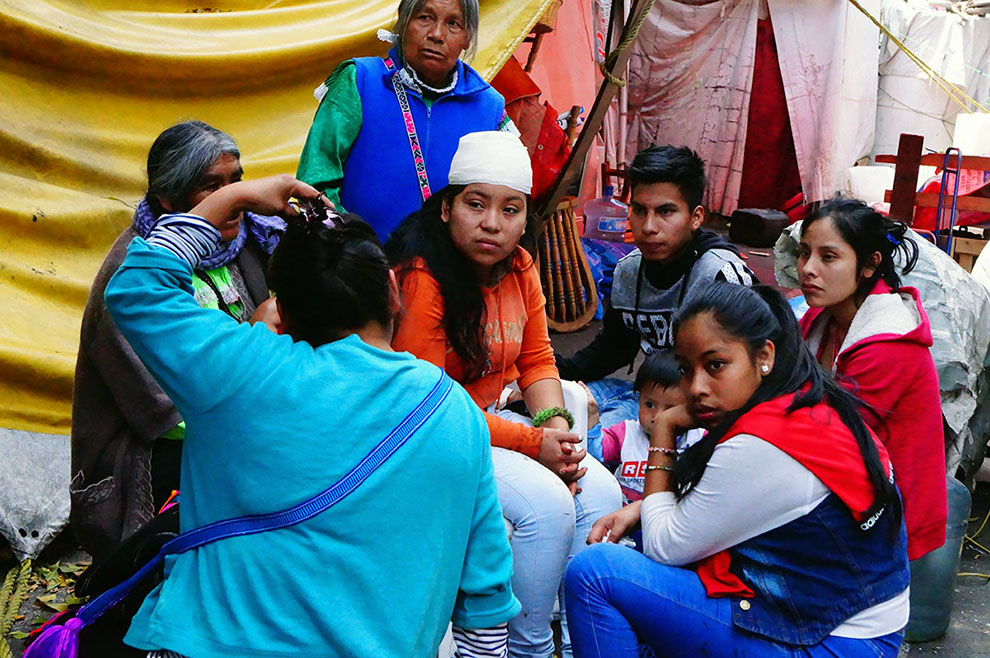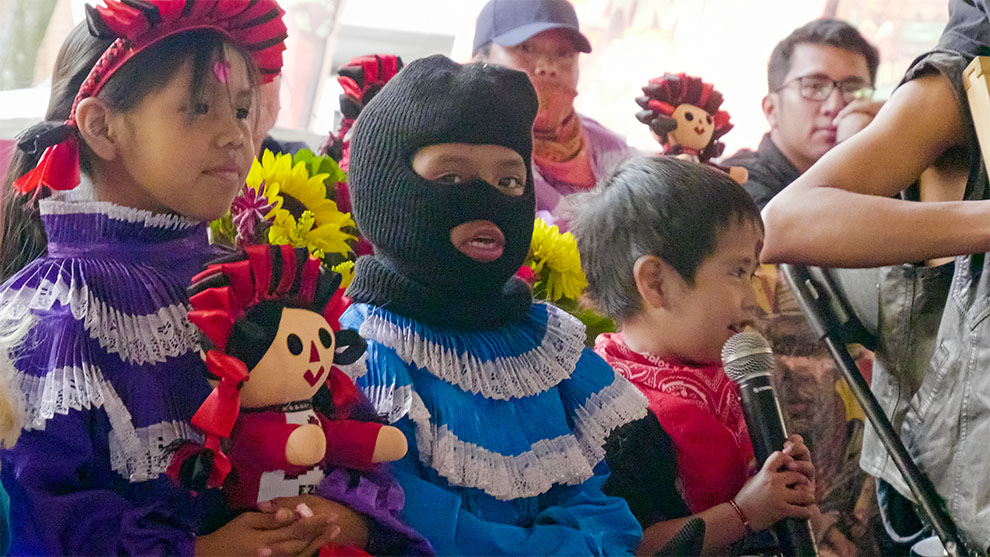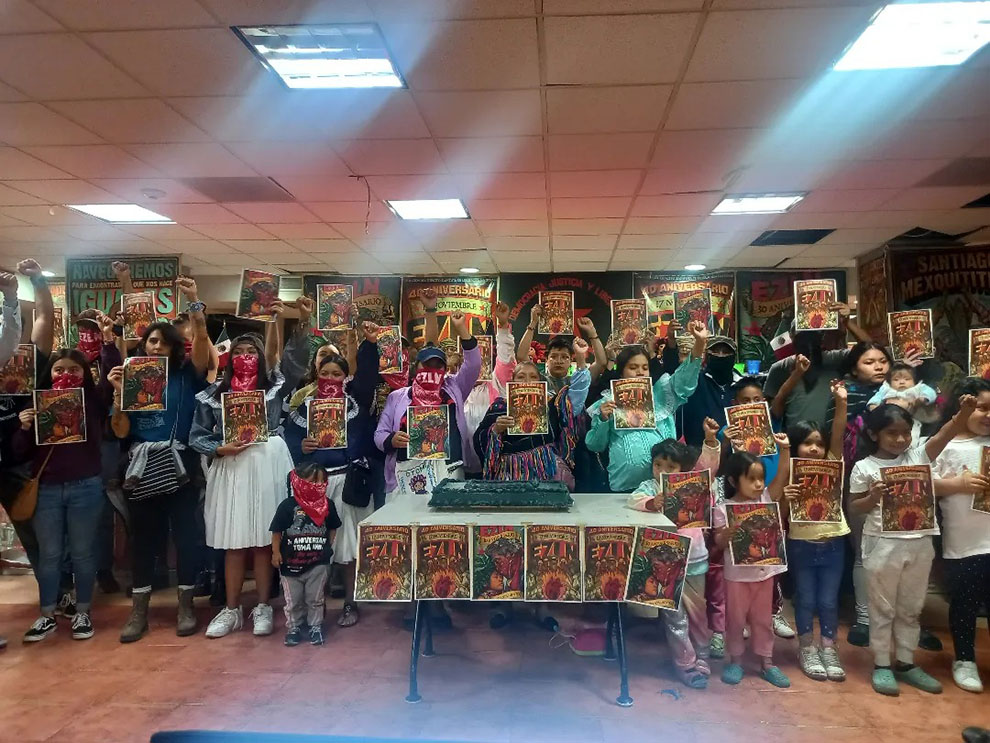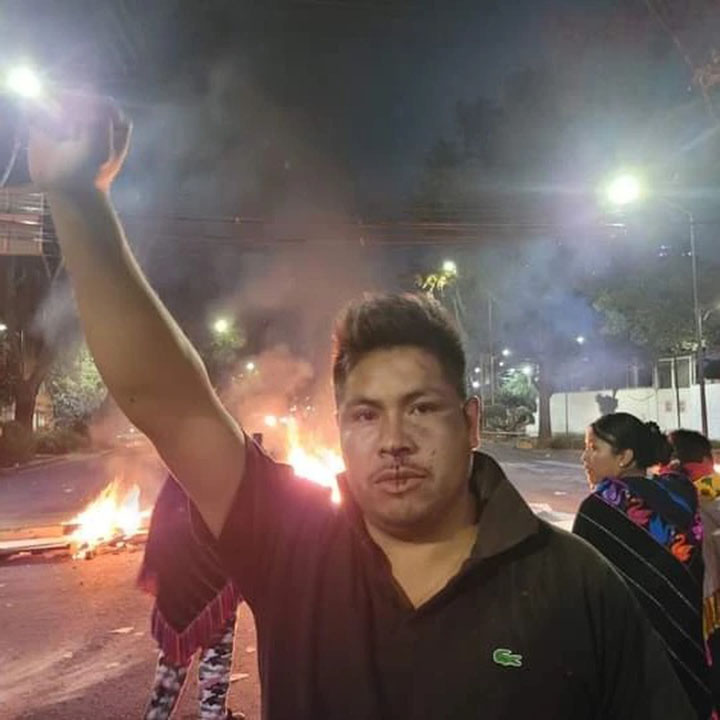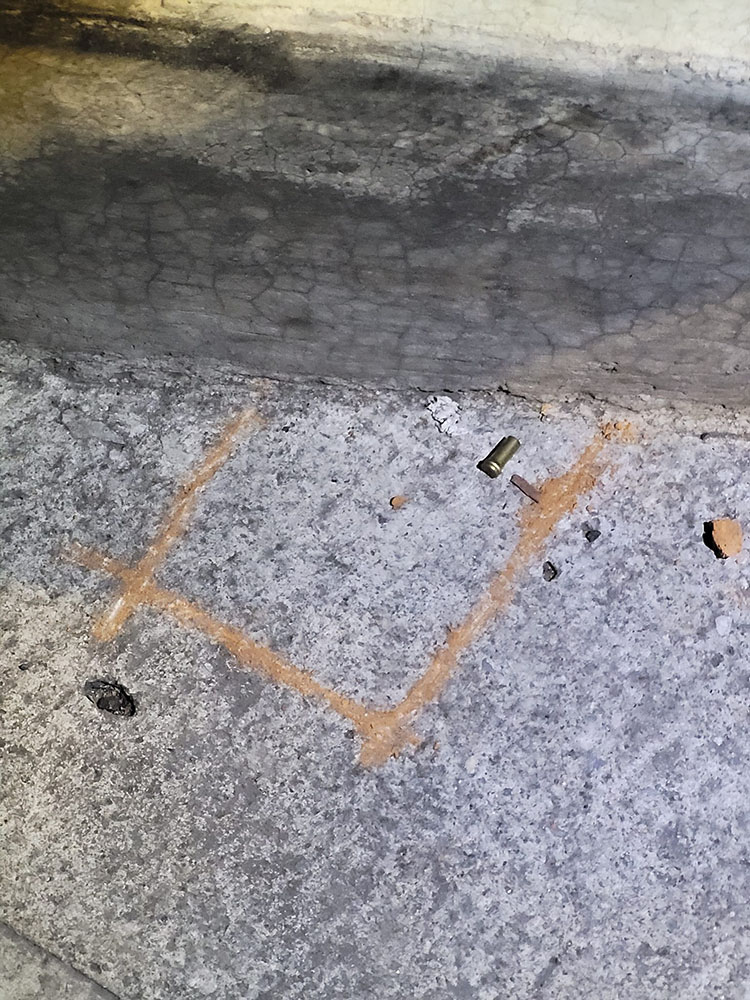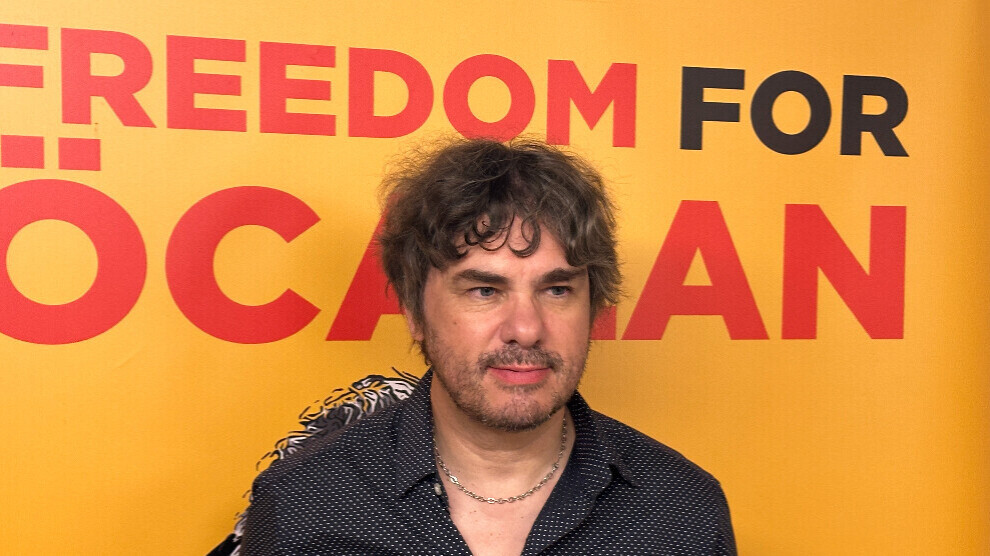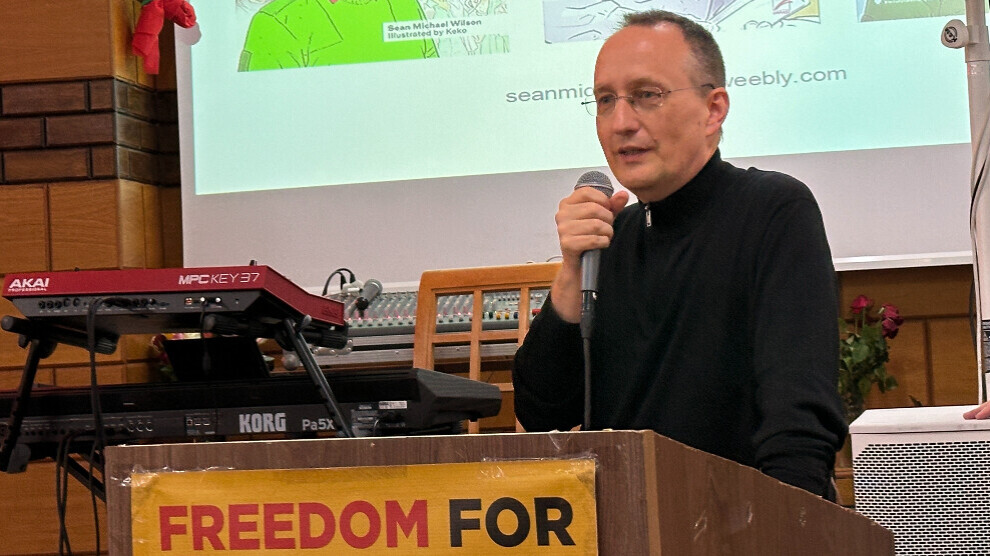Drone captures moment of defiance, which Israel says was Yahya Sinwar’s last
While the room, the man’s clothing and the arm injury broadly match other visual evidence of Sinwar’s death, The New York Times could not independently verify his identity in the video
Aric Toler, Lauren Leatherby , Riley Mellen Published 19.10.24,
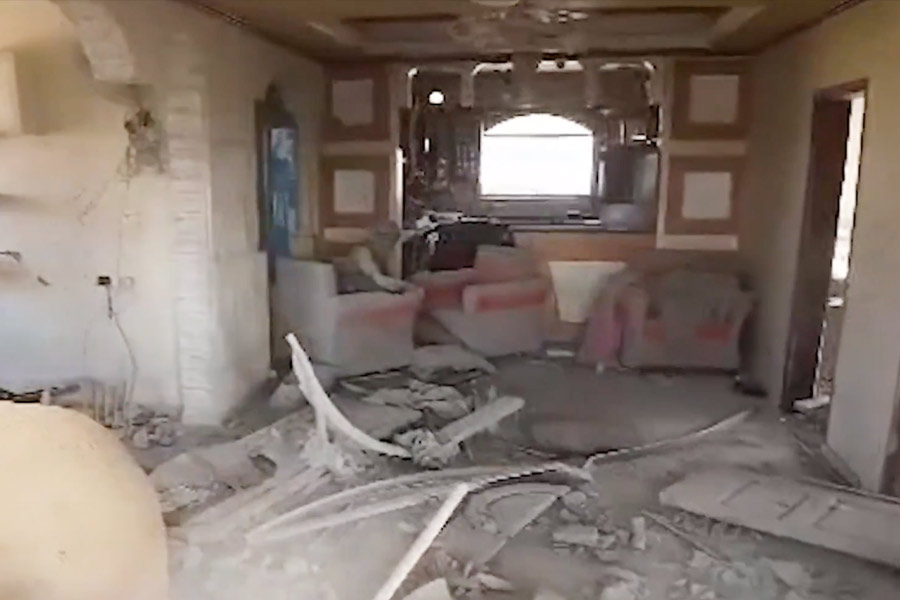
VideograbX/@LTC_Shoshani
It was a pivotal moment of the war in the Gaza Strip and, in a surreal twist of modern warfare, Israel said it was filmed by a drone.
Hunched in an armchair, his face masked by a kaffiyeh and his body covered in dust, is a man who Israel says is Yahya Sinwar, the leader of Hamas. His right arm is gravely injured and bleeding. His fate is all but sealed.
The man, nearly motionless, watches as he is filmed, apparently recognizing the hovering Israeli drone for what it is. In his left hand he lifts a long object, possibly a stick, and puts it back down.
Then, after staring at the drone for at least 20 seconds, he defiantly throws the object at it. The video ends a few seconds later.
The Israeli military, which released the video, said it shows the last moments of Sinwar, an architect of the Oct. 7, 2023, attacks, before he was killed in Rafah on Wednesday. While the room, the man’s clothing and the arm injury broadly match other visual evidence of Sinwar’s death, The New York Times could not independently verify his identity in the video.
In modern warfare, militaries use drones to scope out enemy positions, and often release propaganda videos showing enemy soldiers being killed. On the battlefields in Ukraine, both sides in that conflict have released a steady stream of drone footage showing panicked soldiers moments before their deaths.
But here the drone footage shows a solitary figure remarkably close-up. In a war often seen from far away, in large explosions or wide vistas of broken buildings, the moment is remarkably personal.
There are many unknown details about the video, which was heavily edited before it was released. It does not show how the man’s arm was injured, nor does it show the moment of his death.
At the beginning of the clip, the drone enters a residential building in the Tel al-Sultan neighborhood of Rafah, in southern Gaza, through a second-story window.
Photos of the building taken later show more damage, indicating that an explosion occurred at some point after the drone footage was taken.
In another video released by the Israeli military, two tanks are positioned nearby, one of which fires on the building.
Sinwar was killed soon after the drone footage was recorded. A sniper shot him in the head, and then a tank shell flattened much of the building, the military said.
The New York Times News Service
October 19, 2024

Yahya Sinwar, Palestinian leader of Hamas in Gaza Strip in Gaza City, Gaza on December 14, 2022. [Ali Jadallah/Anadolu Agency]

Hezbollah expressed: “Its deepest condolences for the martyrdom of the leader of the Al-Aqsa Flood, head of the Hamas political bureau, the mujahid Yahya Sinwar,” to the Palestinian people, Hamas and the Arab and Islamic nation.
The party stressed in a statement on Friday that Sinwar: “Carried on the mission and the torch of leadership from the martyred leader Ismail Haniyeh (the former head of the political bureau, martyred on 31 July, 2024) in order to continue on the path of resistance, giving and sacrifices with the heroic Mujahideen and brave resistance fighters.”
Hezbollah noted that Sinwar: “Stood in the face of the US project and the Zionist occupation and sacrificed his blood for this until his martyrdom, reaching the highest ranks of dignity and excellence.”
The statement stressed: “We in the leadership of Hezbollah, who are facing with our resistant and steadfast Lebanese people the repercussions of the criminal Zionist aggression, affirm our support for our Palestinian people. We have full confidence in the divine promise and victory for His believing servants.”
The Islamic Resistance Movement Hamas mourned the head of its political bureau, Sinwar: “Who ascended as a heroic martyr, advancing and not retreating, fighting and confronting the occupation army on the frontline, defending the land of Palestine and its sanctities. He inspires the spirit of steadfastness, patience, determination and resistance.”
Sinwar was killed in the Tel Al-Sultan area in Rafah, south of Gaza, on Wednesday after armed confrontations with the Israeli occupation army, in which drones and artillery were used.
READ: ‘Dying for Palestine is an unmatched honour’, says Al-Azhar following Sinwar assassination
October 19, 2024

Former Tunisian President Moncef Marzouki in Tunis, Tunisia on September 1, 2019 [Yassine Gaidi/Anadolu Agency]
Former Tunisian President Moncef Marzouki lamented that the head of the Hamas political bureau, Yahya Sinwar, was martyred defending the land where he was born.
Marzouki posted on his Facebook page: “Lame logic is that Israel, a nuclear state that violates all norms and laws and occupies the lands of others, has, according to the weak phrase they shamelessly continue to repeat, the right to defend itself, but its victims do not have the right to defend themselves even if they are burned in tents, starved and displaced.”
He added: “According to the same lame logic, Palestinians must accept the siege in Gaza, colonialism in the West Bank and apartheid in Israel; otherwise they are a terrorist and an anti-Semite! No, you scholars of logic, they are neither a terrorist nor an anti-Semite, they are just a resister.”
READ: Hezbollah: ‘Sinwar stood up to US, Zionist occupation until his martyrdom’
Al-Marzouki continued: “May God have mercy on Abu Ibrahim (Al-Sinwar). This resistance fighter did not die in a tunnel shielded by hostages as the typical lying claims say, but rather, he died on the ground in military uniform with his weapon in his hand, defending the land where he was born and martyred. Regarding 7 October, when will the Israelis get enough revenge for a catastrophe that they piled up the firewood for and when will they wake up from their rage after committing vengeful massacres that would make the entire human race sweat.”
The Palestinian resistance movement, Hamas, officially mourned the head of its political bureau and the commander of the Al-Aqsa Flood battle, Yahya Sinwar, on Friday after he was killed in armed clashes with the occupation army in the city of Rafah in the southern Gaza Strip.
Palestine tribes mourn Sinwar: ‘He was martyred fighting until his final moment on the front lines
October 19, 2024

Palestinian leader of Hamas Yahya Sinwar makes a speech in Gaza City, Gaza on June 05, 2021 [Ashraf Amra/Anadolu Agency]

The Supreme Authority for Tribal Affairs in the Gaza Strip expressed its condolences to the Palestinian people, the Arab and Islamic nation and the free people of the world for the martyred national leader Yahya Sinwar “Abu Ibrahim”, head of the Islamic Resistance Movement Hamas and leader of Al-Aqsa Flood.
The Palestinian tribes added that Sinwar was martyred while fighting the occupier: “Until his final moment, on the front lines among his men in the field of honour, pride and dignity, watering the land of Palestine with his pure blood.”
The authority continued: “The Palestinian masses will remember the leader Yahya Sinwar for his patriotism, courage, honesty and loyalty to his people and cause.”
The authority stressed that the martyrdom of the leaders and fighters would not break the will of the Palestinian people to continue the struggle and jihad to eradicate the occupation from the land and establish an independent Palestinian state.
Young boy said to have sent father drawings of dead IDF troops, asked when the war would end, in months of correspondence captured near where terror chief was killed
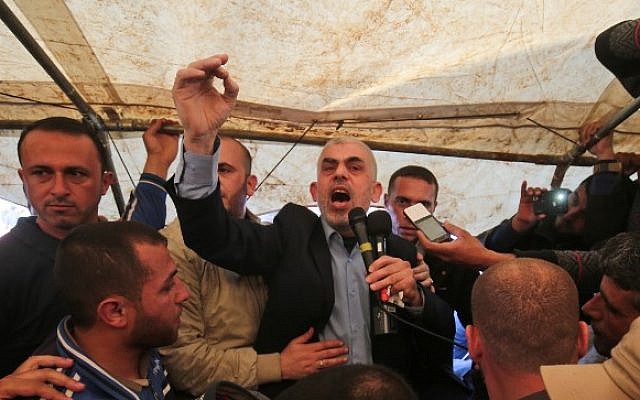
Yahya Sinwar, leader of Hamas in the Gaza Strip, speaks during a protest east of Khan Younis, in the southern Gaza Strip on April 6, 2018. (AFP/Said Khatib)
Troops searching homes near where Yahya Sinwar was killed found letters he sent and received, including correspondence with his 10-year-old son, in which the slain terror chief tried to imbue the child with a hatred for Israel, Hebrew media reported Friday.
According to Channel 12, Sinwar wrote his son several sermons excoriating Israel. The boy, in turn, reportedly sent his father drawings of dead Israeli soldiers, and at one point was said to ask when the war would end.
Sinwar was the architect of the onslaught that sparked the war in Gaza on October 7, 2023, when thousands of Hamas-led terrorists stormed southern Israel to kill nearly 1,200 people and take 251 hostages.T
He was killed Wednesday in a chance encounter with Israeli troops operating in southern Gaza’s Rafah, where he had apparently fled from Khan Younis.
On his person, troops were said to find other correspondence containing highly valuable intelligence, as well as NIS 40,000 ($10,760) in cash and a fake ID.
A month after his release, Sinwar, then 49, married Samar Muhammad Abu Zamar, then 31. They had three children, whose respective names, ages and fates are unclear
Iraqi youth set fire to MBC's office in Baghdad

Tehran, IRNA – Some Iraqi youth have set fire to the Saudi broadcaster MBC's office in Baghdad after the TV channel insulted the martyred commanders of the Resistance.
The Iraqis, who were angry at the Saudi channel for its insult, entered the MBC office near the Baghdad University and wrecked the equipment in its headquarters, IRNA cited from the Iraqi media early on Saturday.
The security forces present in that area could not prevent the Iraqi people from storming the building of the broadcaster.
During its program on the weekend, the MBC had released a report in which it called the Resistance leaders terrorist.
The Palestinian resistance movement Hamas, in a statement, called the Saudi media move as a moral decline, and it urged the MBC officials to apologize for their insult.
The resistance groups in Iraq have warned that they would attack the MBC office in Baghdad if it did not close.
The Iraqi users shared the link of the Saudi network and called on the people to publicly ask for its closure.
Some Resistance commanders and leaders include the former commander of the Islamic Revolution Guards Corps Qods Force General Qassem Soleimani, the leader of the Lebanese resistance movement Hezbollah Sayyed Hassan Nasrallah and the leader of Hamas Ismail Haniyeh.
The security forces present in that area could not prevent the Iraqi people from storming the building of the broadcaster.
Download
During its program on the weekend, the MBC had released a report in which it called the Resistance leaders terrorist.
Protesters storm Saudi broadcaster MBC's office in Baghdad over remarks against Iran-backed groups
Report on ’terrorism‘ in the region sparked anger among militia group supporters
Supporters of Iran-backed groups ransacked the Baghdad office of Saudi broadcaster MBC early on Saturday, a security source told The National, over a report that referred to commanders of Tehran-aligned militias as “terrorists”.
More than 400 people entered the channel's office in the Al Jamia neighbourhood of the Iraqi capital after midnight. They started a fire in the yard before breaking into the building where they damaged equipment and furniture, a security officer with the Interior Ministry said.
Iraqi security forces later sealed off the area, blocking all roads leading to the building, he said, speaking on condition of anonymity. There has been no official statement from authorities.
Excerpts of the MBC report sparked anger and criticism on social media and Telegram channels belonging to the Iran-backed militias. The report focused on terrorism in the region, and referred to Yahya Sinwar as being the latest “terrorist” to be killed. The Hamas leader was killed by Israel on Wednesday.
Qassem Suleimani, commander of Iran's Islamic Revolutionary Guard Corps' elite Quds Force who was killed at Baghdad International Airport on January 3, 2020, was described as a “symbol of terrorism”. Other key figures such as Abu Mahdi Al Muhandis, killed alongside Suleimani, and Hezbollah leader Hassan Nasrallah, also recently killed in an Israeli strike, were mentioned.
Shiite MP Mustafa Sanad vowed to work to cancel the network's licence. “There is no place for you in Iraq,” Mr Sanad wrote on X. “You listen to the report as if you are listening to [Israeli] Channel 14, which is affiliated with the [Zionist] entity,” he said.
Hamas issued a statement condemning the report and demanding an apology from the broadcaster.
Videos online showed the protesters waving flags of the Popular Mobilisation Forces and the Hezbollah Brigades – one of the most influential Iraqi Shiite militias. Others shouted “No, no to America” and “no, no to Israel”.
Tension and conflict has been escalating in the region as Iran-backed groups – Hamas and Hezbollah – as well as allies in Yemen, Syria and Iraq have been at war with Israel for more than a year. The Islamic Resistance in Iraq, a shadow group consisting of various militias, frequently claims responsibility for drone strikes launched at Israel.
MBC's Baghdad office was also attacked in 2020. A programme aired on MBC1 suggested that Iraqi militia leader Al Muhandis was involved in arranging an attack in Lebanon nearly 40 years ago. At the time the channel said it would place the matter in the hands of Iraqi authorities to protect MBC’s Iraq employees and the organisation.




